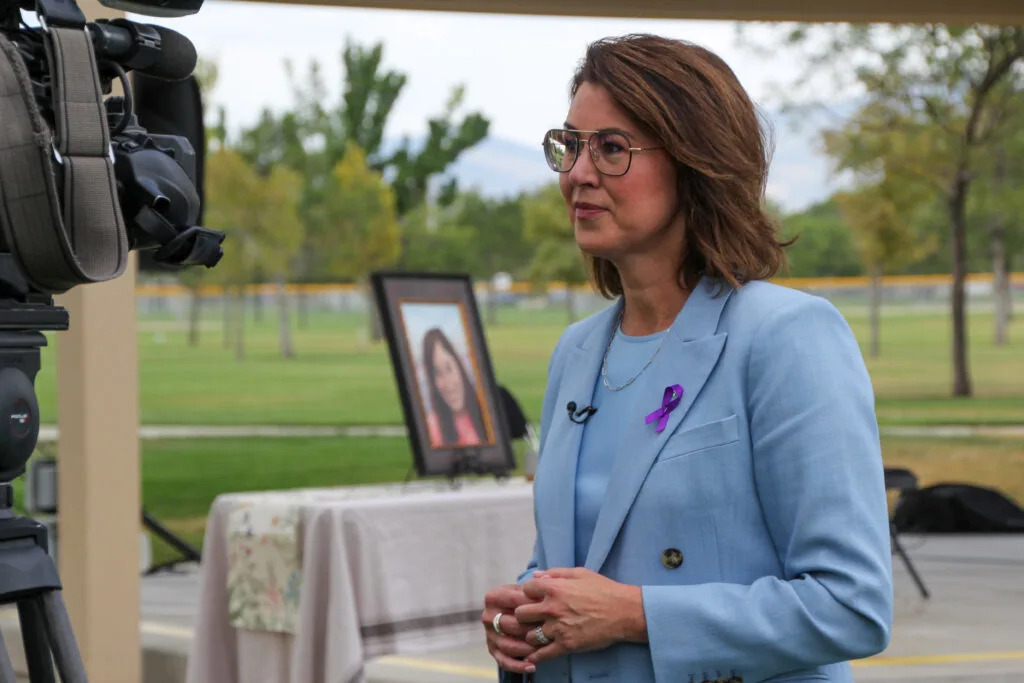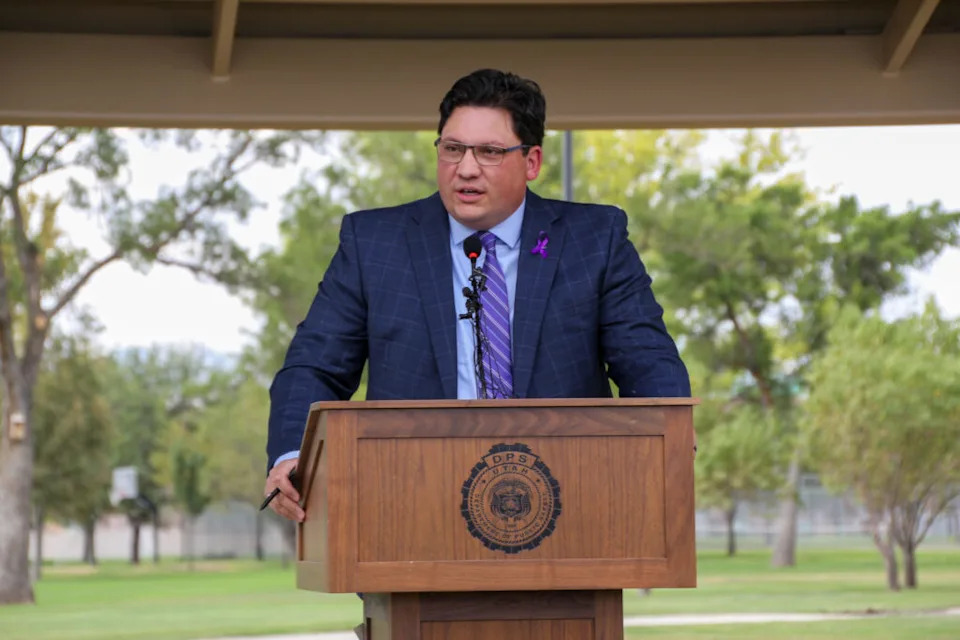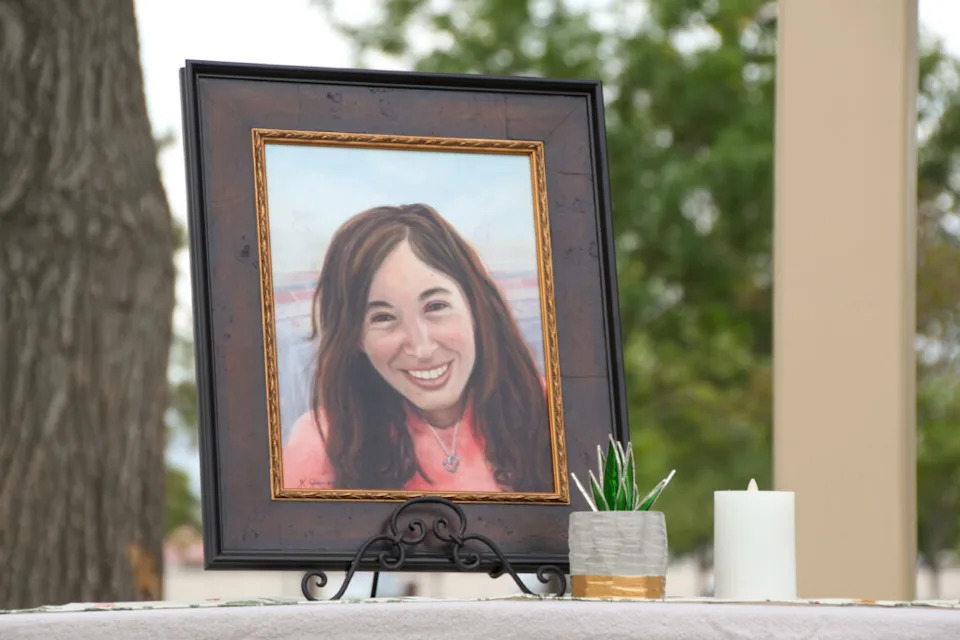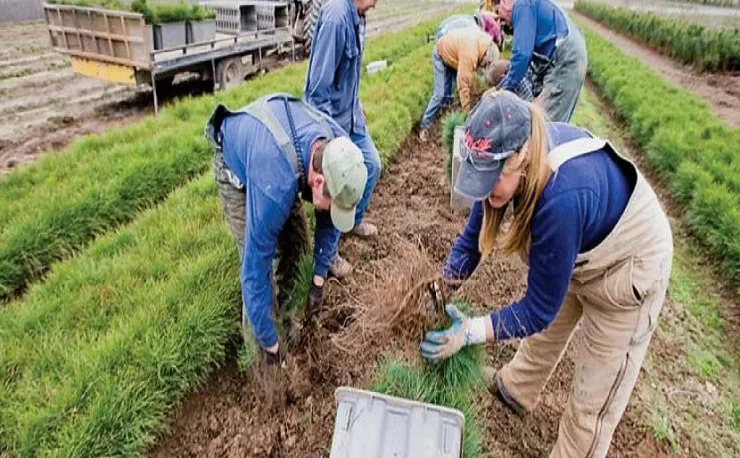
Utah Lt. Gov. Deidre Henderson speaks to reporters at a news conference announcing an online dashboard for domestic violence lethality assessment data at Veterans Memorial Park in West Jordan on Thursday, Aug. 21, 2025. A painting of her cousin, Amanda Mayne, who was murdered by her ex-husband, is displayed behind her. (McKenzie Romero/Utah News Dispatch)
Under a cloud of grief following the deaths of two police officers who were shot and killed responding to a domestic violence call, Utah public safety leaders, lawmakers and service providers announced the rollout of a public dashboard sharing data collected by law enforcement answering reports of intimate partner violence statewide.
The online dashboard displays the number of times officers in the state have used the “lethality assessment protocol” — a series of questions meant to identify the potential for deadly violence in a domestic violence situation, prompting an immediate referral for victim services — and what the answers yielded.
Domestic violence resources
Help for people in abusive relationships is available in Utah:
Utah Domestic Violence Coalition: A confidential statewide, 24-hour domestic violence hotline can be reached at 1-800-897-LINK (5465)
YWCA Women in Jeopardy program: 801-537-8600
Utah child abuse and neglect hotline: 1-855-323-DCFS (3237)
National Domestic Violence Hotline: 1-800-799-7233
In the more than 23,000 assessments conducted by Utah law enforcement since the protocol became statewide law in July 2023, 63% revealed the potential for lethal violence, according to the dashboard data.
The law came out of a tragedy in the family of Lt. Gov. Deidre Henderson, whose cousin, Amanda “Mandy” Mayne, was murdered three years ago by her ex-husband, who then turned the gun on himself. Her death pushed Henderson to question what more could have been done to help Mayne, and how law enforcement agencies were — or weren’t — communicating with each other about cases of intimate partner violence.
A painting of Mayne was on display during the news conference, and her mother, Shauna Mayne, was in attendance.
“Data is important. The faces and the names, the families behind the data, are even more important,” Henderson said at a news conference at Veterans Memorial Park in West Jordan on Thursday. “And what we do with this data, what we do with this information, is critical, because information is only good if we use it.”
One way that data could be used, Henderson said, is developing a “second track” when responding to intimate partner violence — what to do with the offender.
“We’ve got the victim track, and we need to get that offender track put in place, because we care about them too, and we want everyone in our state to be successful and happy. And sometimes that requires law enforcement intervention, sometimes that requires better training, sometimes it requires therapy,” Henderson said.
Introducing the dashboard, newly confirmed Department of Public Safety Commissioner Beau Mason said the group had considered rescheduling the event as the state mourns the deaths of Tremonton-Garland Police Sgt. Lee Sorensen and officer Eric Estrada, who were killed Sunday night as they responded to 911 hang-up calls from a Tremonton home.
“But with that incident, it also brings urgency to how important this cause is and why we are here today, why we gather to talk about such an important topic, and how we can make a difference in domestic violence and intimate partner violence,” Mason said.
Charges filed Wednesday allege Ryan Michael Bate, 32, headbutted his wife and slammed her head with a door before grabbing her throat and pushing her against a wall. One officer was shot running to help the woman after Bate shot at his police vehicle, prosecutors said, and the second was killed as he attempted to render aid to his fallen colleague. Prosecutors announced they intend to pursue the death penalty for Bate.

It wasn’t the first time Bate had been involved in a domestic violence report, said Rep. Ryan Wilcox, R-Ogden, who co-sponsored SB117 in the Utah House in 2023, expanding the lethality assessment protocol statewide. In a previous case, he said, the lethality assessment had been utilized to identify potential risk Bate posed and gave an opportunity to offer domestic violence services.
Now, following the deaths of Sorensen and Estrada, Wilcox said the question of what to do with offenders to prevent future violence has weighed heavy on him.
“We had him,” Wilcox said of Bate. “We issued the protocol. It gave us the information we were looking for, and he didn’t murder her at that time, and in the back of my mind all week, ever since I read the report, has been ‘what should we have done differently then that would have prevented the loss of life of these officers?’” Wilcox said.
After SB117 became law and the lethality assessment went into use around Utah, Wilcox said, he was surprised, though he shouldn’t have been, at just how much it was being used and the resources that were needed in response.
“We hoped that it would save some lives. We hoped that it would work. We didn’t realize the depth of … how many would need to be added, that we would find,” Wilcox said. “That’s what I expect will happen as we hone these tools and we will uncover more things. We’ll understand better how to help. We’ll understand better how to prevent and understand how to get ahead of it, so that we don’t have to be here having these conversations again.”









Comments